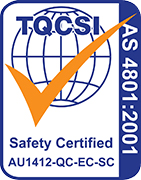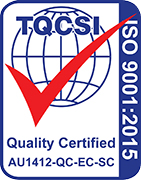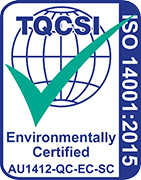Tackling PFAS with City of Darwin
In 2022, the City of Darwin officially opened the Shoal Bay Leachate Treatment Plant. This is a global first for tackling the ‘forever chemical’ PFAS in landfill leachate using an innovative chemical-free technology.
The cutting-edge new plant has boosted the standard in Australia for the treatment of leachates, including those containing PFAS, using a combination of engineering and nature-based solutions.
Project Summary
Leachate and PFAS are a significant pollution challenge all over the world. PFAS is a highly persistent contaminant found in sewage treatment plants, landfills, and where fire-fighting foams have historically been used.
Leachate is a toxic liquid generated in landfills which is created after rainwater passes through waste materials that contain heavy metals, ammonia, and other undesirable substances like PFAS. This can pose a risk to human health and the environment.
Previously, PFAS removal from heavily contaminated leachate has been seen as too difficult and too expensive to treat. The City of Darwin and WCG worked together to lead the way in designing an effective and affordable treatment solution by developing the Shoal Bay Leachate Treatment Plant.
50
Project Summary
Leachate and PFAS are a significant pollution challenge all over the world. PFAS is a highly persistent contaminant found in sewage treatment plants, landfills, and where fire-fighting foams have historically been used.
Leachate is a toxic liquid generated in landfills which is created after rainwater passes through waste materials that contain heavy metals, ammonia, and other undesirable substances like PFAS. This can pose a risk to human health and the environment.
Previously, PFAS removal from heavily contaminated leachate has been seen as too difficult and too expensive to treat. The City of Darwin and WCG worked together to lead the way in designing an effective and affordable treatment solution by developing the Shoal Bay Leachate Treatment Plant.
Solution
Our innovative treatment plant is a first globally using a Low-Energy Evaporative Fractionation (LEEF) system to remove PFAS from leachate.
At the facility our LEEF System® will treat 50 megalitres of leachate each year, removing PFAS contaminants using foam fractionation with minimal energy and no chemicals.
Treated effluent from the LEEF System® is then further processed via a biological treatment plant which utilises microbes for nutrient removal and a treatment wetland for polishing.
Finally, the treated leachate is used to irrigate a vetiver grass crop allowing for phytoremediation, a process whereby plants are utilised to clean up the remaining contaminates, and evapotranspiration resulting in a zero-discharge treatment plant.

Outcomes
We understand this to be a global first, a permanent facility treating PFAS in leachate coupled with biological and ecological treatment and zero disposal – a closed loop system.
In full production, the plant is processing up to 140,000 litres of leachate a day.
With our LEEF System®, the Shoal Bay Waste Management Facility is producing a minimal PFAS concentrated waste stream using zero chemicals, low energy and operational requirements, and no pre-treatment.
This sustainable, cutting-edge leachate treatment solution has supported City of Darwin’s vision to protect the environment from toxic leachates. Additionally, it is supporting the aims of the City’s 2030 Waste and Resource Recovery Strategy. Early water quality results are positive, indicating that regulatory requirements are being not only met, but exceeded.
50
megalitresof leachate is treated each year by the LEEF System











